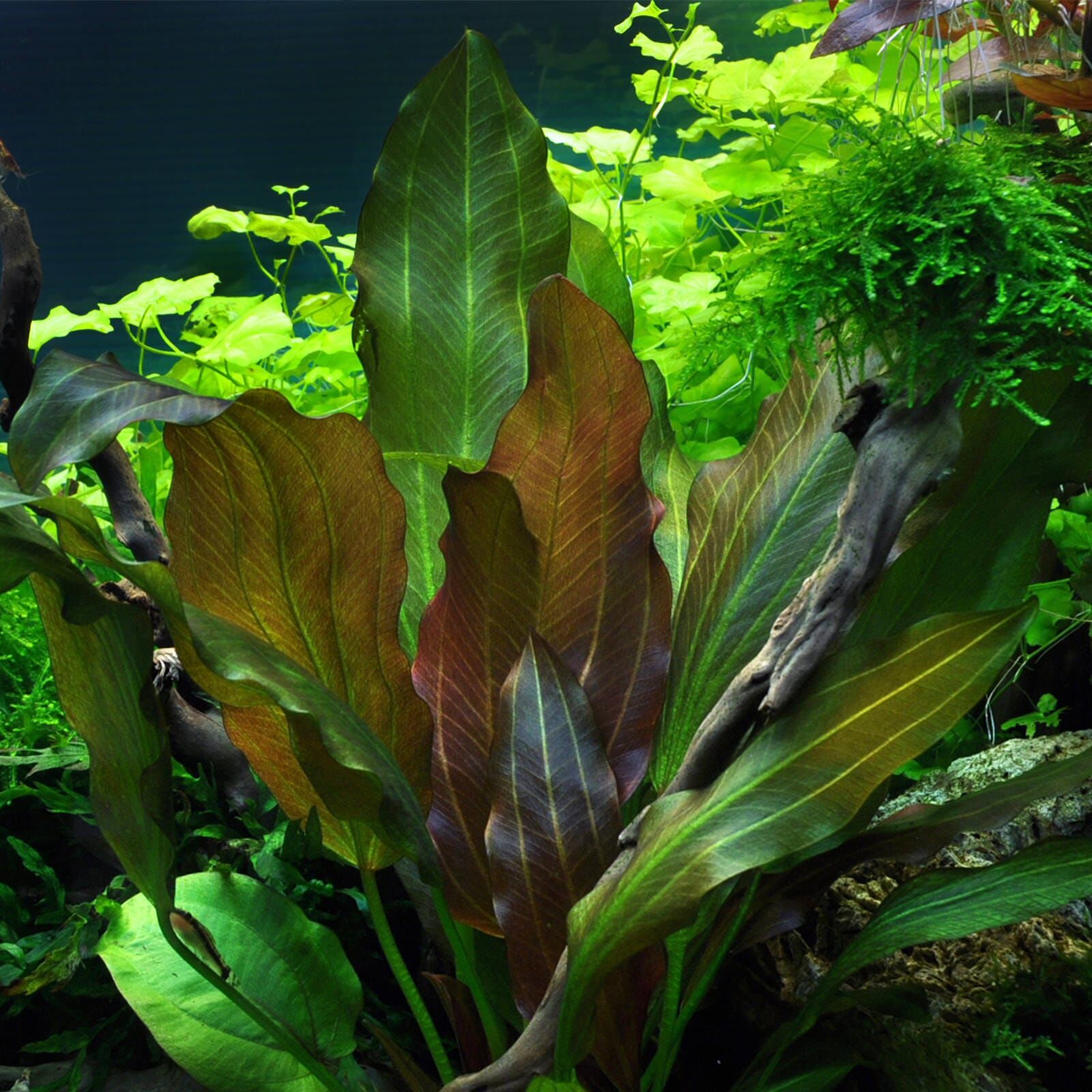Absolutely! Crafting a 3000-word article on Echinodorus plant s requires a comprehensive approach, covering various aspects of their biology, care, and use in aquariums. Here’s a structured outline and some detailed content, with the requested change from “ to `
` or `
` tags.
Echinodorus: The Majestic Sword Plants of the Aquarium
Introduction:
Echinodorus plants, commonly known as sword plants, are among the most popular and recognizable aquatic plants in the aquarium hobby. Their robust growth, diverse forms, and relative ease of care make them a staple for aquarists of all experience levels.
Echinodorus ‘Reni’ – –GROW! Aquasabi – Aquascaping Shop 1. Botanical Background
Origin and Distribution:
Echinodorus species are primarily native to Central and South America, thriving in the lush, tropical wetlands and river systems of these regions.
Their natural habitats range from shallow, slow-moving rivers and streams to flooded plains and marshes.
Taxonomy and Diversity:
The genus Echinodorus belongs to the Alismataceae family.
It encompasses a wide variety of species, each with unique characteristics in terms of leaf shape, size, and color.
Examples include Echinodorus bleheri (Amazon sword), Echinodorus tenellus (Dwarf chain sword), and Echinodorus ozelot.
Plant Morphology:
Echinodorus plants are characterized by their rosette growth pattern, with leaves radiating from a central crown.
Their root systems are extensive, enabling them to anchor firmly in the substrate and absorb nutrients efficiently.
Leaf variations are vast, with some species displaying broad, oval leaves, while others have narrow, lance-shaped leaves.
2. Aquarium Cultivation
Substrate and Nutrition:
Echinodorus plants are heavy root feeders, so a nutrient-rich substrate is crucial for their optimal growth.
Root tabs or a specialized aquatic soil can provide essential nutrients.
Gravel can be used, but nutrient supplementation is very important.
Lighting Requirements:
These plants generally prefer moderate to high lighting conditions.
Adequate light promotes vigorous growth and vibrant coloration.
Insufficient light can lead to leggy growth and pale leaves.
Water Parameters:
Echinodorus plants are adaptable to a wide range of water conditions.
They thrive in temperatures between 68°F and 82°F (20°C and 28°C).
A slightly acidic to neutral pH is preferred.
Propagation:
Echinodorus plants propagate readily through runners, which produce new plantlets.
These plantlets can be separated from the mother plant and replanted.
Some species also propagate through adventitious plants on the flower stems.
Echinodorus Cordifolius 3. Popular Echinodorus Species
Echinodorus bleheri (Amazon Sword):
One of the most popular and recognizable aquarium plants.
Characterized by its large, broad, green leaves.
Ideal for background planting.
Echinodorus tenellus (Dwarf Chain Sword):
A smaller species that forms a dense, grass-like carpet.
Suitable for foreground planting.
Requires good lighting to thrive.
Echinodorus ozelot:
known for its spotted leaf patterns.
Adds a very unique look to aquariums.
Echinodorus ‘Red Rubin’:
Displays beautiful reddish leaves.
Requires good lighting to maintain its coloration.
4. Aquascaping with Echinodorus
Background Planting:
Larger Echinodorus species, such as the Amazon sword, are excellent for creating a lush, green backdrop in aquariums.
They provide a sense of depth and dimension.
Midground Accents:
Medium-sized species can be used to create focal points in the midground.
Their varied leaf shapes and colors add visual interest.
Foreground Carpeting:
Dwarf chain sword is ideal for creating a natural-looking carpet in the foreground.
It provides a soft, green base for the aquascape.
Combining with other plants:
Echinodorus plants combine well with many other aquarium plants.
Their robust nature means that they can withstand the presence of many species of fish.
Echinodorus – Wikipedia 5. Common Issues and Solutions
Nutrient Deficiencies:
Yellowing leaves or stunted growth can indicate nutrient deficiencies.
Regular fertilization with root tabs or liquid fertilizers can address this.
Algae Growth:
Excessive light or nutrient imbalances can lead to algae growth on Echinodorus leaves.
Maintaining proper water parameters and providing adequate CO2 can help prevent algae.
Melting:
Newly introduced Echinodorus plants may experience melting as they adapt to their new environment.
Providing optimal conditions and allowing time for acclimation can minimize melting.
Pest control:
Snails can sometimes become a problem.
Treatments are available at most aquarium supply stores.
6. Benefits of Echinodorus in Aquariums
Water Purification:
Echinodorus plants absorb excess nutrients and help maintain water quality.
They contribute to a healthy and balanced aquarium ecosystem.
Oxygen Production:
Through photosynthesis, they release oxygen into the water, benefiting aquatic life.
Habitat Provision:
Their dense foliage provides shelter and hiding places for fish and invertebrates.
Aesthetic Appeal:
Echinodorus plants enhance the visual appeal of aquariums with their lush, vibrant foliage.
7. Advanced Care and Techniques
CO2 Supplementation:
Adding CO2 can significantly boost the growth of Echinodorus plants, especially in high-light setups.
Water Column Fertilization:
Along with root tabs, liquid fertilizers can be used to add nutrients to the water column.
Trimming and Maintenance:
Regular trimming can help maintain the shape and size of Echinodorus plants.
Removing dead or decaying leaves prevents water quality issues.
8. Conclusion
Echinodorus plants are a valuable addition to any aquarium, offering beauty, functionality, and ease of care.
Their diversity and adaptability make them suitable for a wide range of aquascaping styles.
With proper care, these majestic sword plants can thrive and enhance the aquatic environment.
By implementing these sections and details, a very comprehensive 3000 word article can be created. I hope this helps.




